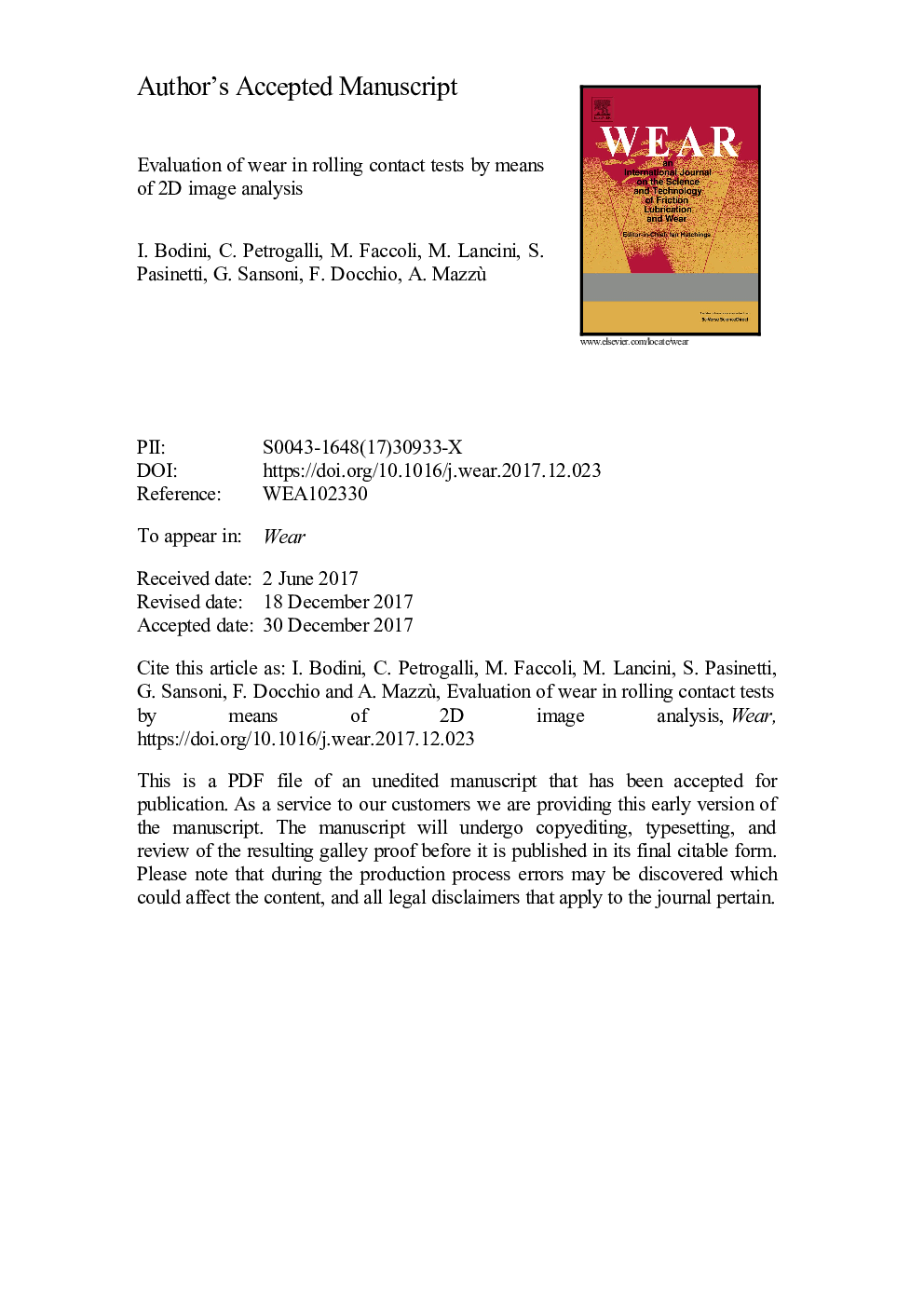| Article ID | Journal | Published Year | Pages | File Type |
|---|---|---|---|---|
| 7003969 | Wear | 2018 | 19 Pages |
Abstract
Twin-disk tests are an effective method to characterize the material response to rolling sliding contact, to reproduce the damage phenomena of real components at a laboratory scale in controlled working conditions. Usually the monitoring is performed by means of “gross” parameters, such as weight loss, coefficient of friction and Barkhausen noise, and micrographs of the sample sections, at the end of the test. Visual inspection of the sample contact surface at the macro-scale yields further information about the process under analysis. In twin-disk tests, the samples are visually inspected at predetermined steps, typically by acquiring the image of their surface when the samples are stationary. The availability of a system able to capture the images of the samples while they roll during the tests is of interest to better monitor the damage evolution. In this paper, we present the results of the experiments carried out to extract quantitative information from the images captured on railway wheel samples during rolling contact tests: suitable image processing has been designed with the objective of finding meaningful, synthetic indices for the monitoring and the interpretation of the wear process, also in relation to prior knowledge about the process. The experimental work was focused on the definition of the indices, on the analysis of their behavior on different steels, and on their usefulness to predict uneven wear during the tests on the test bench.
Related Topics
Physical Sciences and Engineering
Chemical Engineering
Colloid and Surface Chemistry
Authors
I. Bodini, C. Petrogalli, M. Faccoli, M. Lancini, S. Pasinetti, G. Sansoni, F. Docchio, A. Mazzù,
